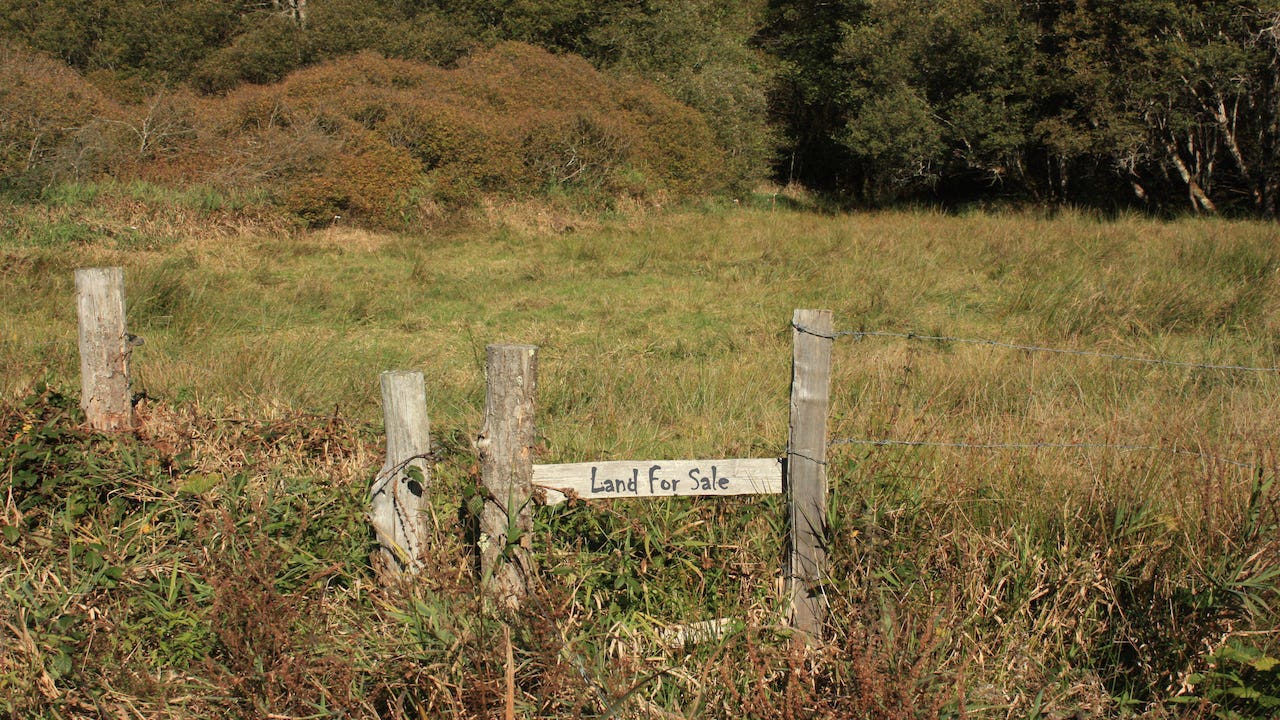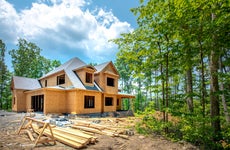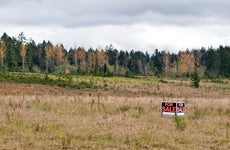How to buy undeveloped land

The Bankrate promise
At Bankrate we strive to help you make smarter financial decisions. While we adhere to strict , this post may contain references to products from our partners. Here's an explanation for .
Buying a raw piece of land: It sounds like something out of the history books, that the pioneers did. But it’s quite common among folks who are planning to build a new home— in fact, more than 1.5 million building permits for new-construction residences were issued in October 2022, according to data from the U.S. Census Bureau and U.S. Department of Housing and Urban Development. Many real estate investors also delve into buying undeveloped land, either to diversify their assets or with the aim of selling at a profit someday.
If you’re in the market to buy undeveloped land — or just intrigued by the prospect — let’s break down what you need to know, whether it’s for investment or for homeownership.
What is undeveloped land?
Undeveloped land, also known as raw land, is a piece of property that is empty and devoid of man-made improvements. That means it comes as nature built it: no electricity or sewer hookups, no buildings, no man-made facilities or resources. In some cases, there may not even be roads leading to it.
In short, it is virgin territory. Some people refer to vacant lots in a community or sub-division as raw land, but technically they’re not the same. True undeveloped land has absolutely no infrastructure, while a vacant lot or parcel is empty but usually has utilities (water, sewage, energy, etc.) and infrastructure in place, readily available to be used.
What are the advantages of buying undeveloped land?
There are many advantages to buying undeveloped land.
- Cost. In general, undeveloped or raw land will be far less expensive than real estate (that is, land that already has structures and infrastructure on it). With raw land, you’re buying just that: land. With a developed property, you’re paying for the land plus all the improvements.
- Flexibility. You have many more options for how you’ll use the land. If you buy a developed property, unless you want to spend even more money demolishing the existing structures, how you use the property is locked-in. With undeveloped land, you can build whatever sort of structure you’d like or use the land for almost any purpose, so long as it meets local zoning requirements.
- Less competition. There are generally fewer people who are interested in purchasing empty land than people who want to buy developed properties. That means there’s a good chance you’ll face much less competition when you put in offers.
- Grant and loan opportunities. Many undeveloped lots are in rural areas. Depending on where you buy, you may be able to get a low-interest loan or grant from one of the USDA’s programs to help people purchase and develop land.
What are the drawbacks of buying undeveloped land?
Buying undeveloped land isn’t without its drawbacks, especially if you’re trying to make it habitable.
- Cost to develop. While the land itself might be cheaper than real estate, you’ll have to pay all the associated costs of developing that land. You may need to pay your local municipality to extend sewer, water and electricity services or pave a road. If you’re building a home, it can get expensive, with the average cost to construct a home reaching almost $300,000 — on top of the land purchase; don’t forget to add in things like septic tanks and wells (if you can’t connect to public facilities).
- Unexpected roadblocks and regulations. Unless you happen to be a structural engineer or construction professional, developing raw land has a lot of technicalities and logistics you might not foresee — such as extending roads to make a driveway possible, notes Andrew Daniels, a real estate blogger at Millennial Homeowner. “Another thing people forget is the grade of the land. The municipality will have a certain grade (required) for any house that goes on a lot, and you may need to bring in fill to bring the land up high enough for it to be graded properly. One house on our street brought in 110 truck loads of fill to bring their land up to the right grade.”
- Difficult financing. Securing financing for a raw land purchase might be more difficult than borrowing money for a typical existing-home purchase. Expect to pay higher rates and have to provide a larger down payment.
How do you finance a land purchase?
When you buy real estate, you’ll typically finance it with a mortgage. However, purchasing raw land is different. It usually requires a special type of mortgage, often called a land loan or land financing.
A land loan usually has stricter requirements than a typical mortgage. You’ll usually need strong credit, a big down payment — as much as 35 to 50 percent of the purchase price, vs 20 percent for conventional mortgages— and may even need to provide another piece of property as collateral.
This is because raw land is riskier for the lender than a developed property. If you miss payments and the lender forecloses, it will be harder for the lender to sell the land and recoup its investment.
Having a plan for how you’ll use the land can often make it easier to secure financing. Lenders like to see a plan for developing the property you hope to buy.
Other financing options
If you already own a residence, you can also consider using a home equity loan to get the funds to buy the undeveloped land. If the property is relatively inexpensive, you might be able to use something like a personal loan to finance the purchase.
The land loan is only to buy the property itself. If you want to build on it, you’ll have to seek out additional financing, such as home construction loan.
Tips to consider in buying land
Before you buy a piece of undeveloped land, consider these tips.
- Think about zoning. Zoning laws restrict how you can use different plots within a municipality. If you’re hoping to buy a plot and build a home, make sure it’s zoned for housing. If you want to open a business, make sure the zoning permits commercial enterprises. If not, prepare to fight for a zoning variance.
- Explore government resources. Depending on how you’re going to use the land, you might qualify for financing through the USDA’s Section 523 and 524 loans, or the SBA’s 504 loan. Some of these will finance construction, as well as the land purchase itself.
- Have a plan for utilities and transportation. Unless you want to live totally off-grid, you’ll need to work with the local authorities to extend utilities to your property. Talk to the town and figure out how that process works and what you’ll have to pay. The same is true for infrastructure like paved roads and bridges so you can get to and from the land.
- Consider safety. Many undeveloped properties are in highly isolated rural areas that are far from emergency services — or hard to reach. Have a plan to stay safe and secure: Make sure you have supplies and equipment to deal with natural disasters or major weather events. If you’re not handy with equipment, or have chronic health issues, this might not be an ideal home site for you.
Related Articles



